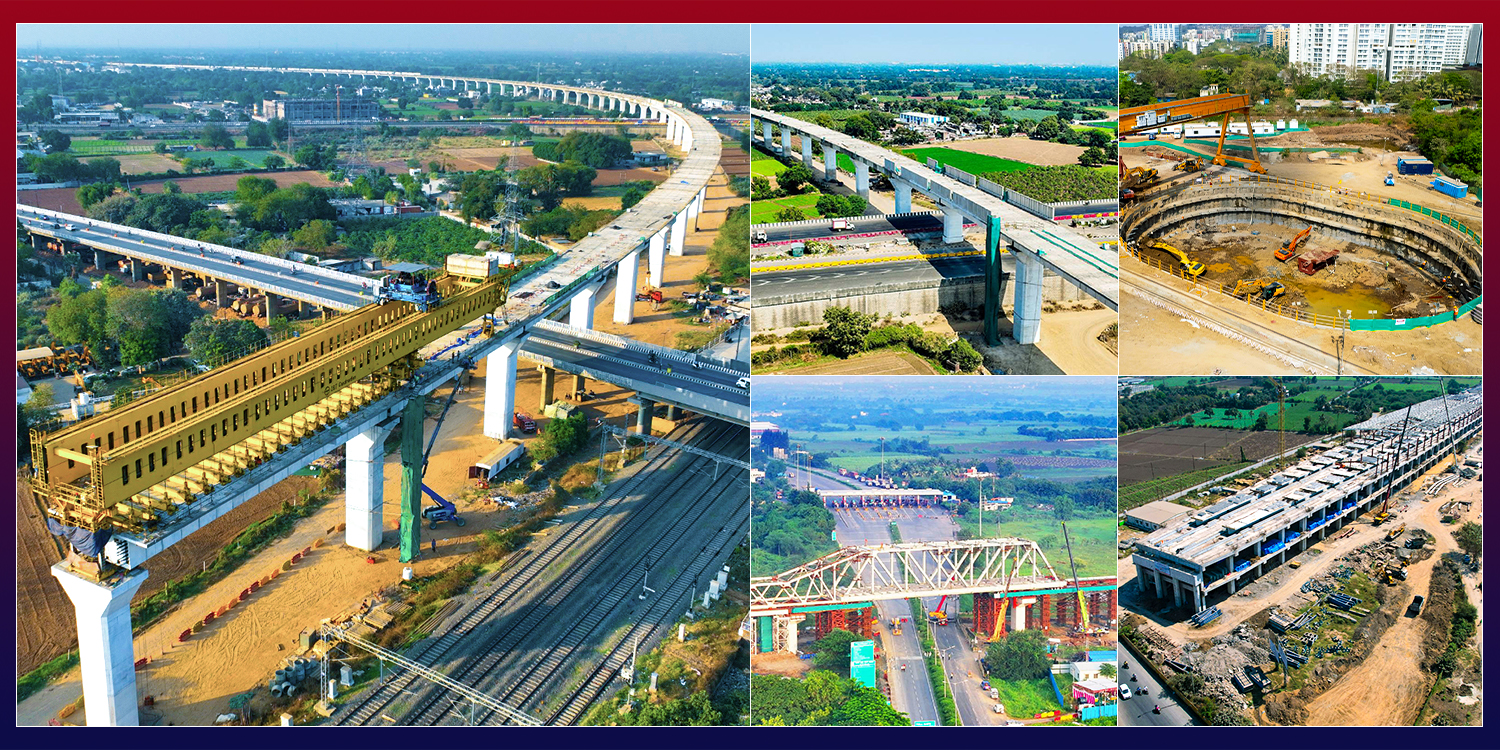-Vivek Kumar Gupta, Managing Director (NHSRCL)
India's transportation landscape is undergoing a significant transformation with the introduction of the Mumbai-Ahmedabad High-Speed Rail (MAHSR) project. Stretching across 508 kilometers amidst the scenic beauty of Maharashtra and Gujarat, this ambitious venture marks the dawn of a fresh era in connectivity and advancement.
Commencing its journey from Mumbai's bustling Bandra Kurla Complex (BKC), the MAHSR project promises to redefine intercity travel dynamics. Powered by cutting-edge technology, trains on this corridor will race at an impressive speed of 320 km/h, effectively bridging the gap between the financial nerve centers of Mumbai and Ahmedabad. The impact of this project extends far beyond mere convenience; it is set to seamlessly integrate the economies of Mumbai, Surat, Anand, Vadodara, and Ahmedabad, fostering unprecedented growth and development along its route.
The meticulously planned route encompasses strategic stops at key cities, including Thane, Virar, Boisar, Vapi, Bilimora, Surat, Bharuch, Vadodara, Anand, and finally, Ahmedabad. This network of stations, strategically positioned to maximize accessibility and convenience, ensures that the benefits of high-speed rail are extended to a wide spectrum of commuters and businesses.
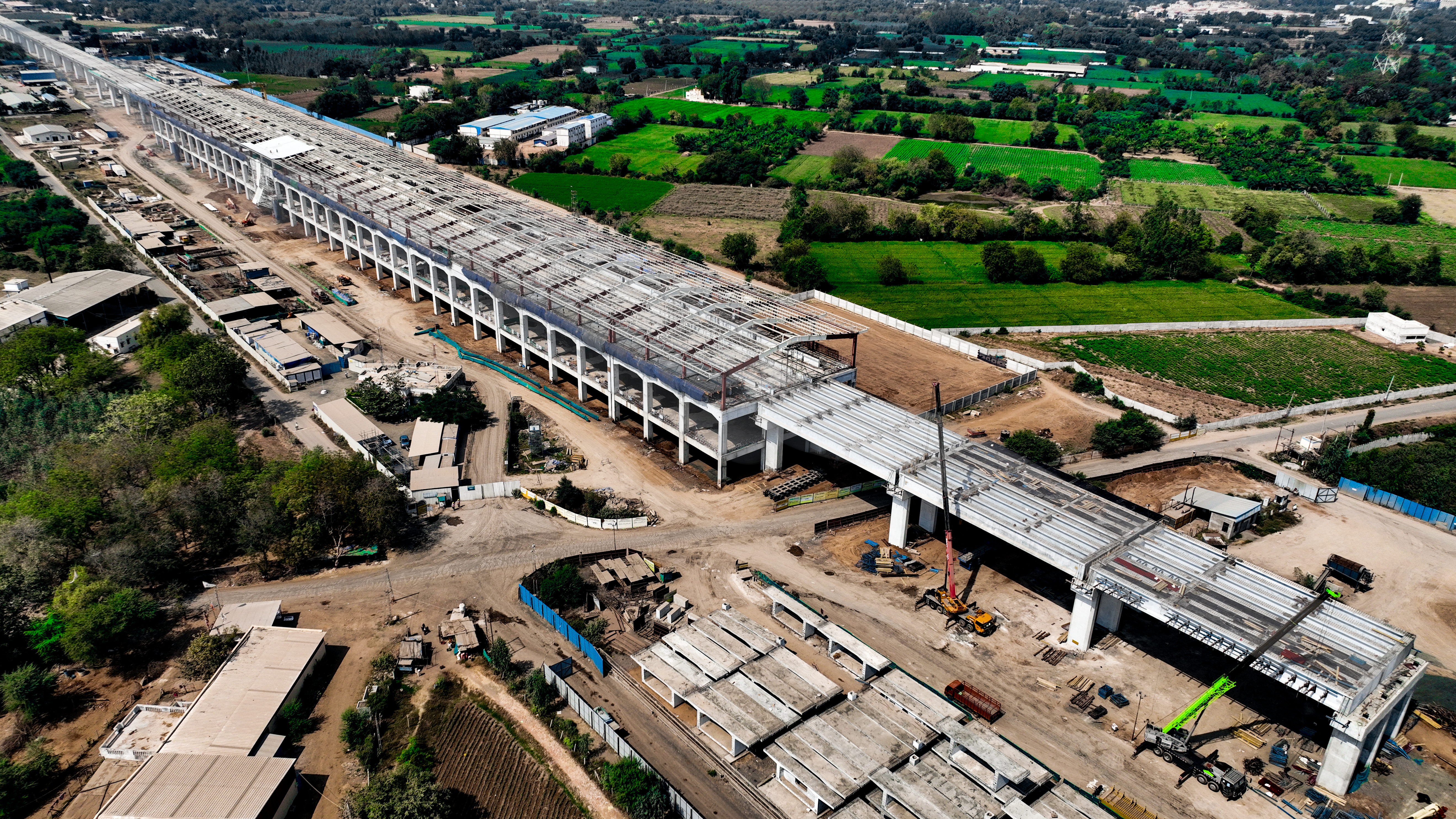 Under construction Anand Bullet Train Station
Under construction Anand Bullet Train Station 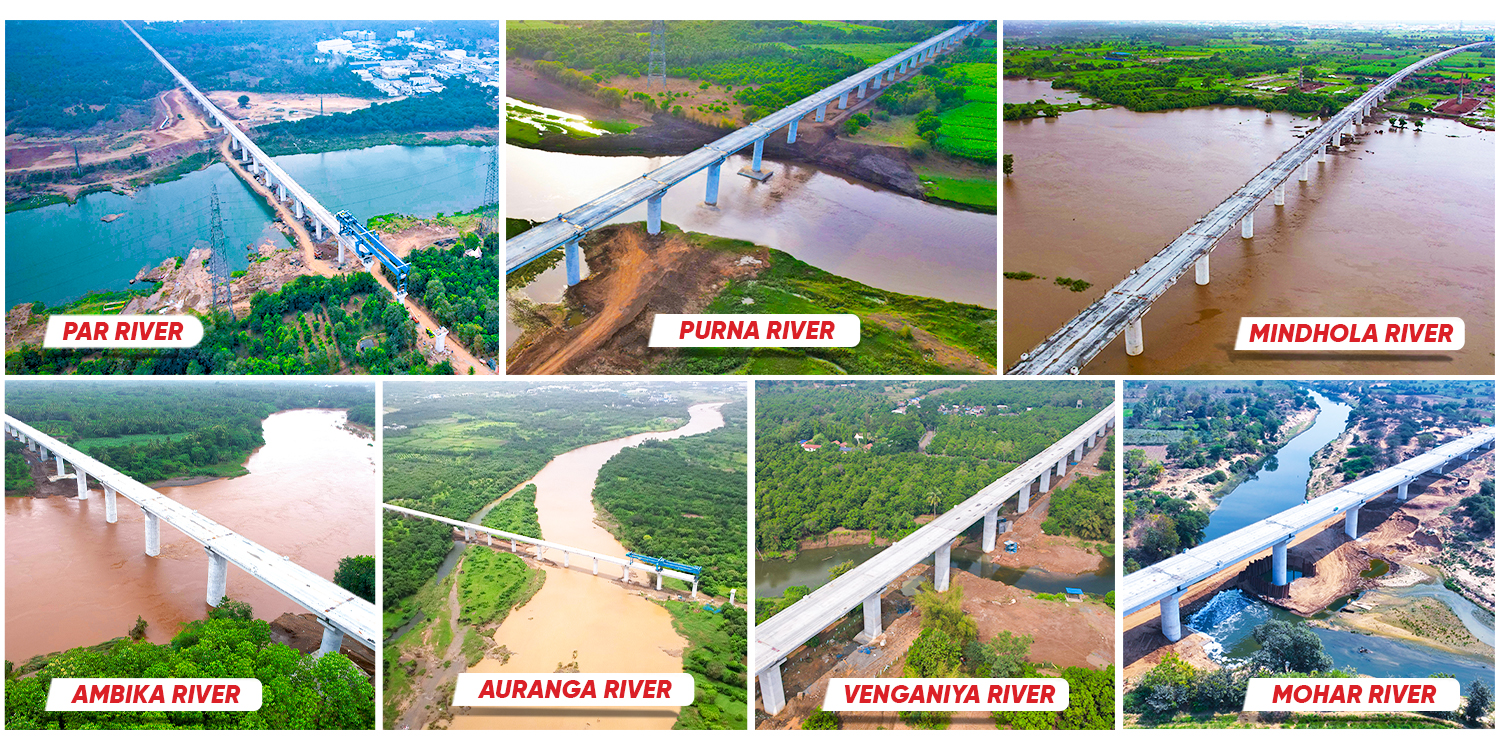 Completion of Seven River Bridges on Bullet Train Corridor
Completion of Seven River Bridges on Bullet Train Corridor
The National High-Speed Rail Corporation Limited (NHSRCL), a visionary entity was established under the aegis of the Companies Act, 2013 to execute India’s first Bullet Train project. Embodying the spirit of collaborative governance, NHSRCL boasts equity participation from the Central Government, the Government of Maharashtra, and the Government of Gujarat. This tripartite alliance underscores a shared commitment to realizing India's high-speed rail ambitions and reflects a harmonious convergence of national and state interests.
The MAHSR project is being executed with Official Development Assistance (ODA) Loan assistance from the esteemed Japan International Cooperation Agency (JICA). The 81% of the construction and procurement costs are funded by the Government of Japan through JICA, with the remaining financial burden shared among the Government of India, Maharashtra, and Gujarat. This collaborative financing model exemplifies the synergy between nations in pursuit of shared developmental goals.
The project's success is the seamless acquisition of land, a feat accomplished with commendable efficiency. With 100% of the required land secured across Maharashtra, Gujarat, and the Union Territory of Dadra Nagar Haveli, the project enjoys a solid foundation for its construction and implementation phases.
The alignment of the MAHSR corridor showcases a harmonious blend of innovation and ingenuity. Leveraging state-of-the-art engineering techniques, approximately 90% of the alignment is elevated, minimizing disruptions to existing infrastructure while maximizing efficiency and safety. Notably, the project marks a milestone in Indian engineering history with the adoption of the Full Span Launching Method (FSLM), a revolutionary construction technique that promises to set new benchmarks in efficiency and speed. With each girder spanning approximately 40 meters and weighing around 970 tonnes, the MAHSR project exemplifies the spirit of innovation and progress.
A crowning achievement of the MAHSR project is the construction of India's first undersea tunnel, a marvel of engineering excellence. Spanning 21 kilometers, with a segment running beneath the Thane creek, this feat of engineering prowess underscores India's emergence as a global leader in infrastructure development. Utilizing a combination of the New Austrian Tunnelling Method (NATM) and Tunnel Boring Machine (TBM) technology, the tunnel represents a triumph of human ingenuity and technological innovation.
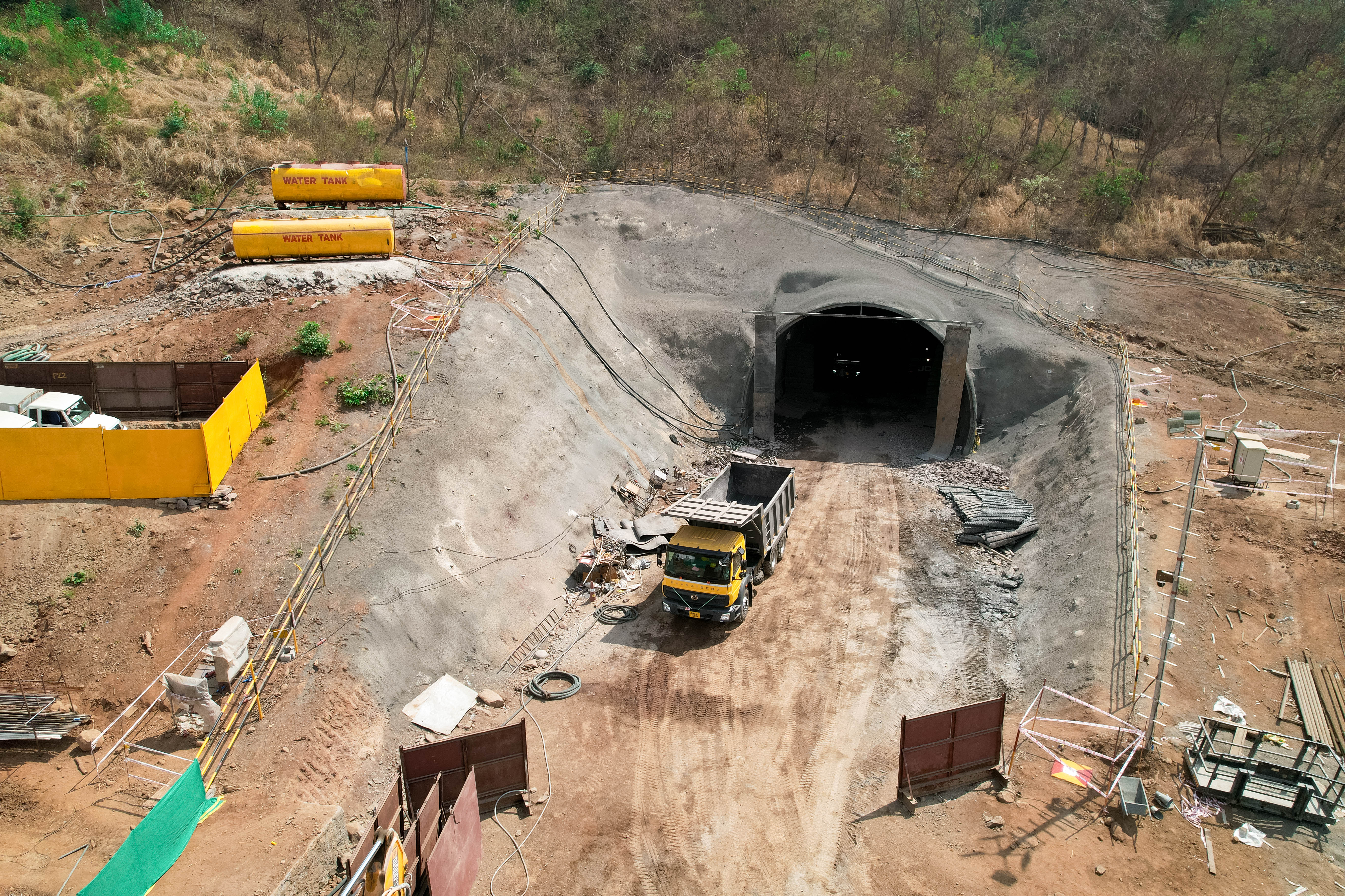 Work in Progress for India's First Undersea Rail Tunnel in Maharashtra
Work in Progress for India's First Undersea Rail Tunnel in Maharashtra
Meticulous attention has been devoted to ensuring passenger safety, comfort, and convenience. Energy requirements for the corridor are met through a network of traction substations, depot traction substations, and distribution substations, guaranteeing uninterrupted operations across the 508 km stretch. Embracing the Digital Shinkansen- Automatic Train Control technology, the project sets new benchmarks in safety and efficiency, underscoring its commitment to passenger well- being. Equipment like early earthquake detecting equipment, Wind speed monitoring system and Rail temperature will ensure the safety of the passengers and structures.
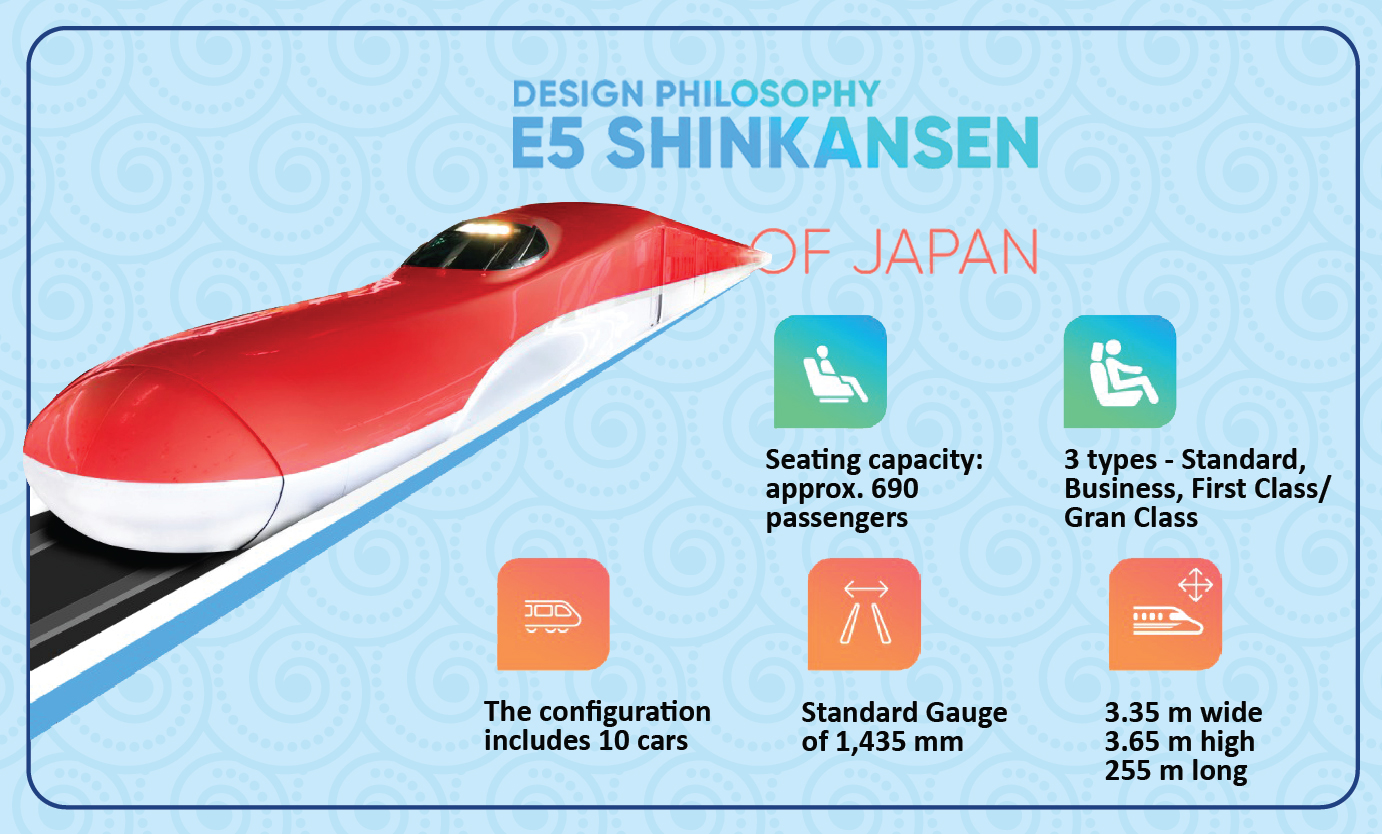 Bullet Train Features
Bullet Train Features
Aesthetically, the MAHSR stations serve as architectural masterpieces, reflecting the unique cultural ethos of their locales. From the vibrant kite- inspired facade of Ahmedabad's station to the contemporary architectural finishes adorning each structure, every station exudes a sense of pride and identity, fostering a deep connection with the local populace.
At Sabarmati, a high-speed rail multi-modal hub stands as a testament to seamless integration, facilitating smooth transitions between various transport modes and ensuring a holistic travel experience for commuters.
With comfort and convenience at the forefront, the MAHSR trains embody the epitome of modern transportation. Leveraging Japanese Shinkansen technology, these trains offer unparalleled safety and punctuality, setting new benchmarks in passenger satisfaction. Featuring double skin aluminum alloy air-tight bodies, noise-insulated cabins, and ergonomically designed seating, every aspect of the MAHSR trains has been meticulously crafted to ensure a comfortable and enjoyable journey for passengers of all ages and abilities.
As the Mumbai-Ahmedabad Bullet Train Corridor prepares to welcome passengers aboard its sleek, high-speed trains, it symbolizes not just a triumph of engineering, but a demonstration to India's unwavering commitment to progress and innovation. With its promise of seamless connectivity, unparalleled comfort, and transformative economic impact, the MAHSR project stands to usher in a new era of prosperity and development for the nation.
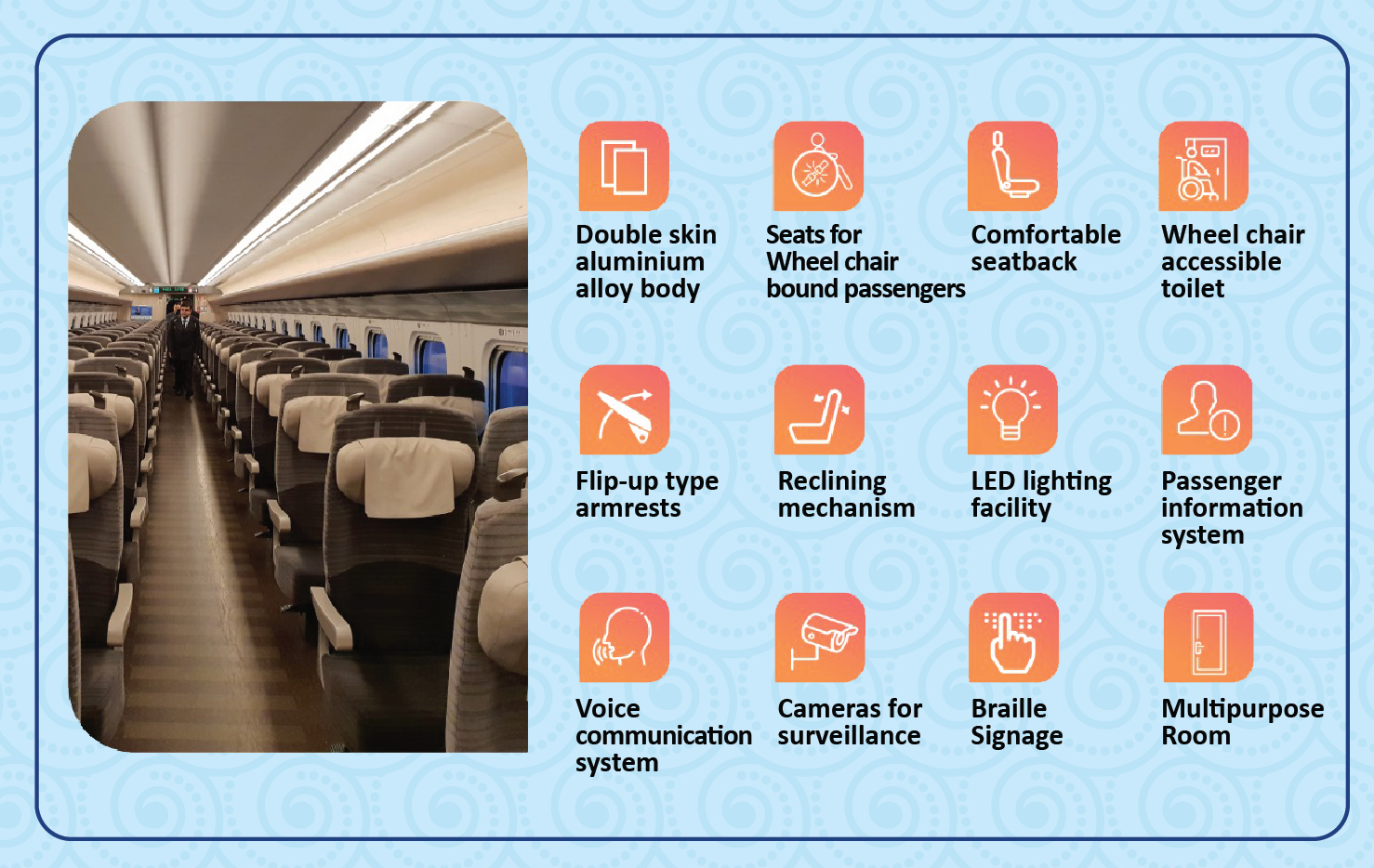 Bullet Train Features
Bullet Train Features
- 173 km of viaduct and 308 km of pier work has been completed in Gujarat.
- All civil, track, depot and electrical contracts have been awarded.
- 100% land has been acquired for the project in Gujarat, DNH and Maharashtra.
- During the year, the contract for three packages for Maharashtra (156 km) i.e. C-1 (Mumbai bullet train station), C-2 (construction of 21 km long tunnel including India’s first undersea rail tunnel) and C-3 (for 135 km alignment with 3 stations: Thane, Virar and Boisar and EW-1 (electrification works for Bullet Train corridor) & D-1 (Design and construction of Thane Rolling Stock Depot in Maharashtra) have been signed.
- The work for Mumbai Bullet Train station and underground tunnel has already commenced.
- Two (2) steel bridges spanning 70 meters and 100 meters are completed in Surat and Anand, respectively.
- The track laying work in Gujarat is progressing well. The training of Indian engineers and work leaders has started in Surat for construction of track works.
- Construction of seven river bridges have been completed along the alignment in Gujarat.
- The High Speed Rail Multimodal hub at Sabarmati is completed.
Mumbai-Ahmedabad High Speed Rail (MAHSR) is India’s first High Speed Train Project. Overall Physical progress of 41.72% [Gujarat-50.70% (Gujarat-Civil work including enabling works-72.42%) and Maharashtra—23.27%] has been achieved up to 31st March, 2024. Financial progress of 48.80% has been achieved up to 31st March, 2024 with an expenditure of T59,292 crores incurred up to 31st March, 2024. Total expenditure in FY 2023-24 has been incurred as 717,108 crores.


